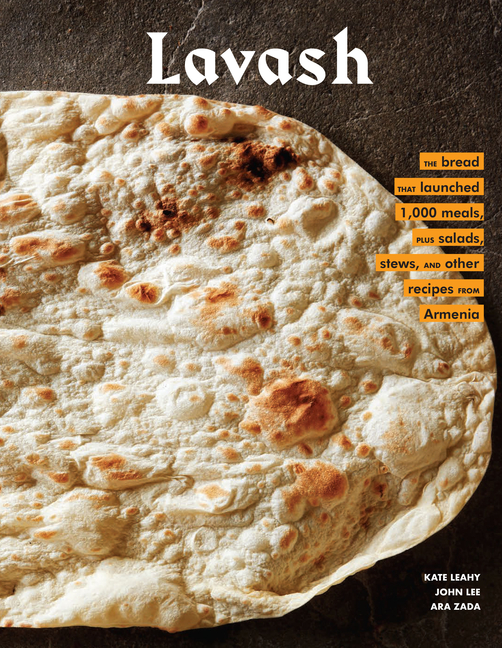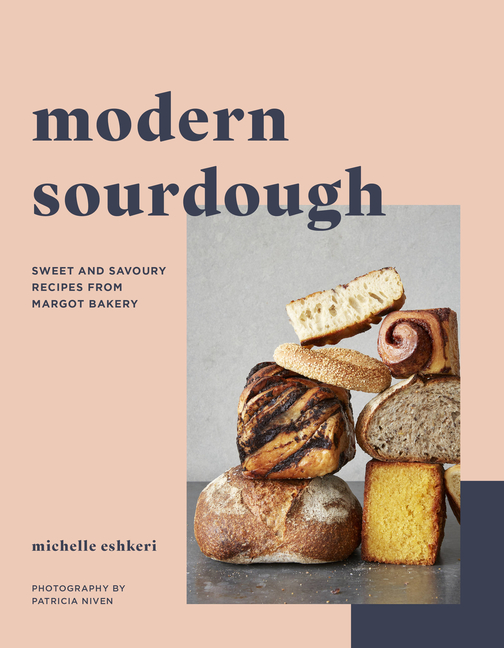Cookbook Roundup: Bread
June 26, 2020
Ten of the best recent-ish bread cookbooks feature choices for every level of baker, from the very new to the most experienced.
A stack of bread cookbooks has been growing on my desk for quite a few months now, while I’ve been plotting for the right time to pull them all together for our readers. Enter COVID-19’s lockdown/open up/lockdown! If you are a “non-essential worker,” you’ve probably been spending a bit too much time at home, near the kitchen, near the oven... thinking, I could make bread in there. And there are many, many people like you, resulting in supply chain problems all over. During the Great Yeast Shortage (is it over?), I spotted an entire jar of yeast in our neighborhood co-op’s Facebook post and then spent several weeks unsuccessfully trying to claim it, as my daily excursions and their open hours never seemed to coincide. One of our local heritage wheat sources is completely sold out of all 2019 wheat and flour. (But they are still stocked with some wonderful farm-related children’s books, such as the delightful Rosie’s New Harness.) And despite the off-and-on empty grocery shelves, it’s an exciting time to fall in love with making bread with so many baking blogs and excellent YouTube videos to troubleshoot every problem. These ten of the best recent-ish bread cookbooks feature choices for every level of baker, from the very new to the most experienced. This roundup is a love letter to my fellow pandemic bakers. We will get through this with bread!
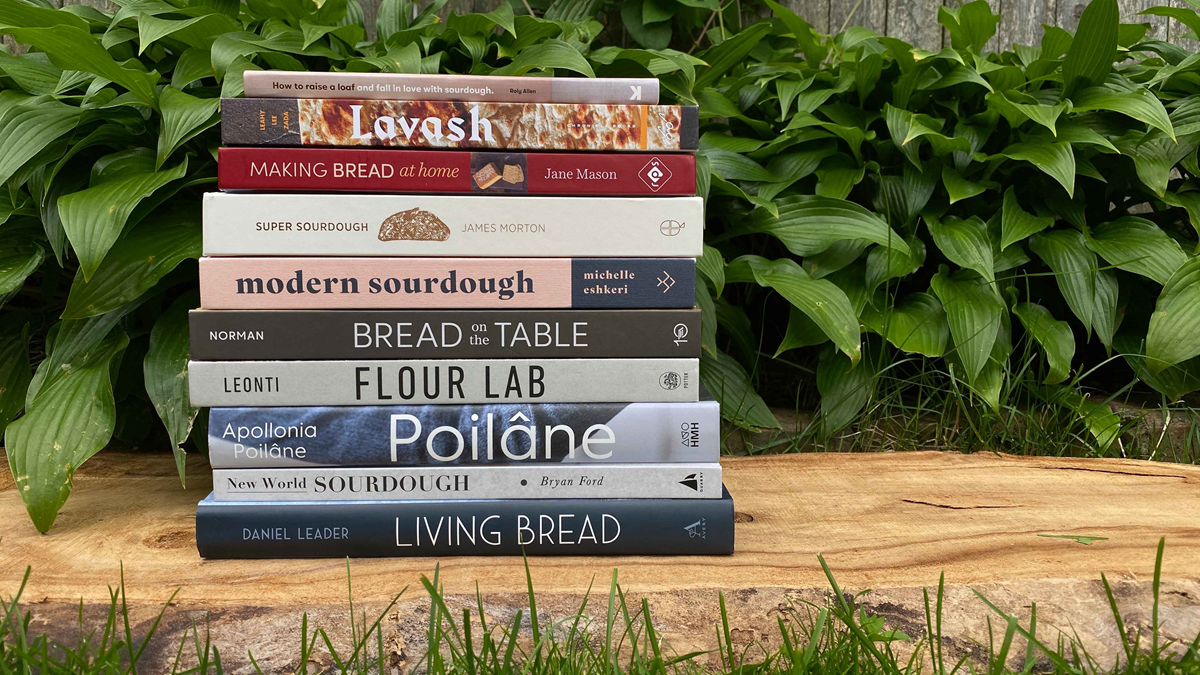
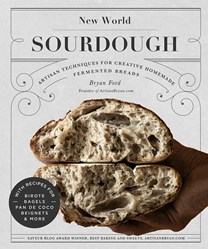 New World Sourdough: Artisan Techniques for Creative Homemade Fermented Breads; With Recipes for Birote, Bagels, Pan de Coco, Beignets, and More by Bryan Ford, Quarry
New World Sourdough: Artisan Techniques for Creative Homemade Fermented Breads; With Recipes for Birote, Bagels, Pan de Coco, Beignets, and More by Bryan Ford, Quarry
I’ll start with the newest book in the stack, which has me raving to anyone who will listen. Written by Bryan Ford, a former accountant-turned baker, this book turned my narrow notions of sourdough on their head. Ford is based in Miami, grew up in an Afro-Honduran family in New Orleans, and has a singular take of the sourdough world that extends beyond the perfect crumb of European-style loaves. As he explained in an interview in Food & Wine: “New World Sourdough is not just a sourdough cookbook. It is about representation, celebration, and appreciation for my culture.” Alongside classics like ciabatta, challah, and brioche, you’ll find a new world of fermented bread adventures: Mexican Birote, Honduran Tortillas de Harina (made with coconut milk), Coco Rugbrød (a mashup of Honduran Pan de Coco and Danish rye bread), Semitas de Yema, and the two words I have been pulsing in my brain since I read them: Plantain Sourdough! Ford’s “relaxed, yet creative” approach to sourdough is just what I need in these stressful times. It’s also more than worth mentioning that Ford is the only Black bread baker with a cookbook out in recent months. He is also donating 5% of his royalties for the life of his book to “various causes to help end police violence and support people of color,” so let’s all get out and buy this book!
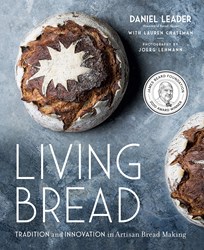 Living Bread: Tradition and Innovation in Artisan Bread Making by Daniel Leader with Lauren Chattman, Avery
Living Bread: Tradition and Innovation in Artisan Bread Making by Daniel Leader with Lauren Chattman, Avery
Each time our team travels to NYC to visit our publishing friends, I make my way to the Union Square Greenmarket for bread to fill my carry-on back home. Little did I know that the loaves at the Bread Alone bakery stand were from recipes destined for a James Beard Cookbook Award this year. With both sourdough and yeast-based recipes from around the world interspersed with loving profiles of bakers, Daniel Leader has created a “bucket list” of bread to eat before you die. What makes this book special is the in-depth discussion of the history of wheat and the changing current landscape of the grain, an historical and scientific exploration of artisanal flours, and an “artisan bread scorecard” to help you track and learn from your baking progress. Each recipe has a sidebar that clearly helps you visualize your start to finish time, which ranges from 35 minutes (Panepepato) to 42 hours (Pane con Perperoncini, Olive, e Pomodoro) or 2 days plus 19 hours (100 percent Einkorn Bread). This is the kind of book you can write after devoting an entire lifetime to breadmaking and traveling the world in search of the most perfect loaves. It is a legacy-worthy piece of work.
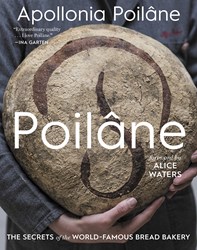 Poilâne: The Secrets of the World-Famous Bread Bakery by Apollonia Poilâne, Houghton Mifflin Harcourt
Poilâne: The Secrets of the World-Famous Bread Bakery by Apollonia Poilâne, Houghton Mifflin Harcourt
One of the profiles in Leader’s Living Bread features Apollonia Poilâne, a third-generation Parisian baker who took over her family bread empire at a young age following the sudden death of both of her parents. At a time when all French bakeries were turning out identical white-flour baguettes, Apollonia’s grandfather Pierre Poilâne offered a giant rustic sourdough miche loaf made with whole-wheat flour, pictured on the cover in her embrace. This is the book that comes out when bread is in your blood. “More often than not, bread not only accompanies my meal but also becomes a crucial component of it. I call this ‘breadcooking.’” Not a slice or crumb is wasted in the Poilâne household: Day-old croissants find new life in a seasonal pudding, stale bread becomes the structure for a chocolate tart crust or textural contrast in a silky-smooth ice cream, bread crumbs find their way into walnut financiers, croutons top salads, and slices thicken soups. The bakery only sells six kinds of breads (all included here), so the rest of the book is devoted to sweets and savories from their Comptoir Poilâne restaurants. And while the Black Pepper Pain de Mie has become one of my favorites, the essence of this book is found in the recipe on page 131: Lionel Poilâne Bread Sandwich, which illustrates her father’s idea “that bread is a fully self-sufficient food, in no need of a separate filling.” Ingredients are as follows: bread—toasted and untoasted—and butter—salted and unsalted. My kind of guy.
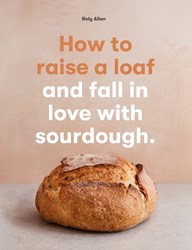 How to Raise a Loaf and Fall in Love with Sourdough by Roly Allen, Laurence King Publishing
How to Raise a Loaf and Fall in Love with Sourdough by Roly Allen, Laurence King Publishing
Think baking bread is too hard? Think baking sourdough bread is too hard? Then Roly Allen’s non-threatening approach to entering the world of sourdough is for you. This easy and accessible overview walks you through your first baby steps of creating and caring for a starter, making a basic loaf, and moving towards adventures such as a Round Rye Loaf, Provencal Fougasse with Green and Black Olives, and Chocolate Sweet and Sourdough. It’s also a great quick-reference for bakers of all levels—when my starter decided to take a snooze this week, I used it to get it bubbly and active again. But most importantly, Allen encourages you to embrace the mental benefits of baking: “With music on in the background, and no goal in mind other than the loaf you’re working on, it is easy to slip into a state of mental ‘flow,’ when you don’t notice time passing, your worries slip away, and mind and body become deeply relaxed. When times are bad, this mental and emotional reset is better than anything.”
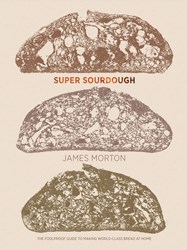 Super Sourdough by James Morton, Quadrille
Super Sourdough by James Morton, Quadrille
If you still consider yourself a sourdough newbie, but have a bit more experience under your belt, dig in to this focused primer from a Glasgow doctor-turned-Great British Bake Off contestant James Morton. And while fully one half of the book is devoted to getting you set up and teaching you the first recipe, it is followed by a chapter of “relaxed recipes” that are easier to approach. Recipes I am most interested in trying include: Focaccia Integrale, Tiger Bread, Leftover-bread Bread, Miche d’Ecosse, Lemon and Poppy Seed Loaf, and Ancient Einkorn Batard. Along with a bread troubleshooting chapter, one of the most helpful parts of the book is a brief two-page spread that outlines various schedules so you can easily plug breadmaking into your weekly schedule. Any sourdough bread cookbook worth its ticket price will include ideas for what to do with the never-ending leftover starter you encounter when you start down this road—and Morton does not disappoint. Banana pancakes, crumpets, cornbread, and pappardelle will all make it into my regular rotation. Morton’s blog, Baking James, is also a wonderful treasure trove of bread goodness, including this intriguing tin pan method developed after the writing of his book.
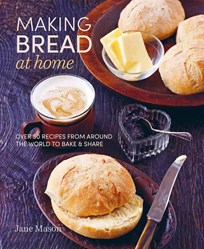 Making Bread at Home: Over 50 Recipes from Around the World to Bake and Share by Jane Mason, Ryland Peters & Small
Making Bread at Home: Over 50 Recipes from Around the World to Bake and Share by Jane Mason, Ryland Peters & Small
If you are looking to push your beginner skills even further, Jane Mason’s fourth bread book has a bit more technical range along with a staggering breadth of recipes from around the world. Mason is the founder of Virtuous Bread, a UK-based organization that aims to “to effect positive social change through bread” by teaching people how to bake bread and set up their own micro-bakeries, then training them to pass on that knowledge to others. In exchange, those people teach other people, “in prisons, schools, care homes for the elderly, shelters for street kids, and centres for young people who are neither in education nor employment.” This is a mission I can get behind! Recipes on my radar from this book include Farinata from Sicily, Simit from Turkey, Lahmajo from Armenia, Pan de Muerto from Mexico.
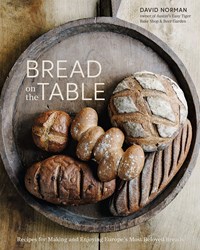 Bread on the Table: Recipes for Making and Enjoying Europe's Most Beloved Breads by David Norman, Ten Speed Press
Bread on the Table: Recipes for Making and Enjoying Europe's Most Beloved Breads by David Norman, Ten Speed Press
We never know the choices we make that will alter the course of our lives. For David Norman, owner of Easy Tiger Bake Shop & Beer Garden in Austin, Texas, it was the decision to spend a school year abroad in Sweden that started him down a life-long journey with bread. “At the time, I was studying literature and dabbling in painting but making bread gave me the same satisfaction that painting did. I was still making something with my hands, with the added bonus of it being quite tasty. … With this book, I am hoping to get you similarly hooked on bread baking.” Norman’s personal bread journey takes us on a tour of European breads from France, Germany, Italy, Scandinavia, along with a section on bread in central Texas (subtitled “Baking Bread in a Tortilla Town”). With clear charts and very thorough instructions, some of the more distinctive recipes here include: Pain Aux Pruneaux et Noisettes (Bread with Prunes and Hazelnuts), Gotlandsbrod (flavored with bitter orange peel), Knackebrod (Swedish crispbread), German Semmeln (white buns covered in stark black poppyseeds), and Smoked Flour Fougasse.
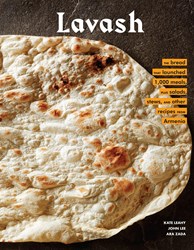 Lavash: The Bread That Launched 1,000 Meals, Plus Salads, Stews, and Other Recipes from Armenia by Kate Leahy, John Lee, and Ara Zada, Chronicle
Lavash: The Bread That Launched 1,000 Meals, Plus Salads, Stews, and Other Recipes from Armenia by Kate Leahy, John Lee, and Ara Zada, Chronicle
If you want to perfect one type of bread this summer, make it lavash. It has been baked for centuries in the subterranean clay ovens of Armenia, a place where bread is so central to meals that “even saying ‘let’s eat’ (hats untenk) translates to ‘let’s eat bread.’” More versatile than focaccia and not as filling as pita, lavash is a thin bread that is impossibly both soft and crackery. Lavash includes an historical overview of the region and a primer on how to stock your Armenian pantry, but the main focus here is squarely on bread: thin everyday bread (lavash), thick everyday bread (tonir hats), herb-stuffed bread (jingalov hats), meat-topped bread (lahmajo). And if you don’t happen to have your own traditional oven in the floor of your kitchen, the authors helpfully teach you how to get the same effect with an overturned wok. The rest of the book is dedicated to recipes for all of the things you can make to serve with your lavash (or wrap with your lavash, or dip into with your lavash): Bean lavash triangles, Lavash-wrapped trout, tomato and bulgur salad, and an all-day bone broth called khash. Hats untenk, indeed!
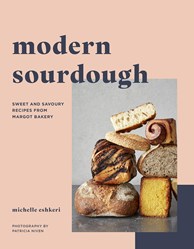 Modern Sourdough: Sweet and Savory Recipes from Margot Bakery by Michelle Eshkeri, White Lion Publishing
Modern Sourdough: Sweet and Savory Recipes from Margot Bakery by Michelle Eshkeri, White Lion Publishing
If you need some sweet with your savory, turn to Modern Sourdough. Self-taught London-based baker Michelle Eshkeri opened Margot Bakery “for the same reason I started baking bread at home, because there was nowhere in easy traveling distance for me to buy good bread for my family.” Her experimentations with breadmaking focused on the naturally fermented varietes, and from there she challenged herself to make sweet doughs with sourdough; her bakery is one of only a few in the UK to do so. Eshkeri says her baked goods live at the intersection of “beautiful and delicious” and I find myself dreaming of the day we can travel again so I can visit her charming bakery. Until the time that I do, I’ll be baking a list of edible treasures from her book: Five-seede Geronimo, Lepeshka (a stamped loaf from Uzbekistan), Pizza di Recco, Beetroot bread, Twice baked lemon curd and pistachio croissants, Plum and fennel bostock, and Sourdough rye brownies.
 Flour Lab: An At-Home Guide to Baking with Freshly Milled Grains by Adam Leonti with Katie Parla, Clarkson Potter
Flour Lab: An At-Home Guide to Baking with Freshly Milled Grains by Adam Leonti with Katie Parla, Clarkson Potter
And now, my baking friends, we get serious. Maybe you’ve made quick breads. Maybe you moved on to yeasted breads, then sourdoughs. Maybe you think you’re ready for the big time. So here we are: time to mill your own flour! “Food made with freshly milled flour is better for your health, the environment, and flavor. I want everyone to start using it,” says baker Adam Leonti. This deep dive into the world of the fundamental ingredient in bread is for the most hardcore science nerd bakers out there, those of you looking for the next level of bread obsession. Working with celebrated Italian cookbook author Katie Parla, Leonti explores the history of grains, the science of milling, and walks you through “choosing the right grain for the job.” Whether it is Red Fife, Magog, Warthog, Redeemer, Sonora, Blue Beard, Frederick, Kansas Turkey, Iraq, or Edison, each flour lends a distinctive quality to the bread you bake, and milling them fresh is the best way to capture the nuances of those differences. While all-purpose white flour provides bread with an other-worldly evenness, everything in Flour Lab looks nutty and homey and fully alive. It makes you believe that the world is wrong when it warns of the dangers of too much bread. That if we all just ate bread like this, we’d be fine. Maybe more than fine. Happy.


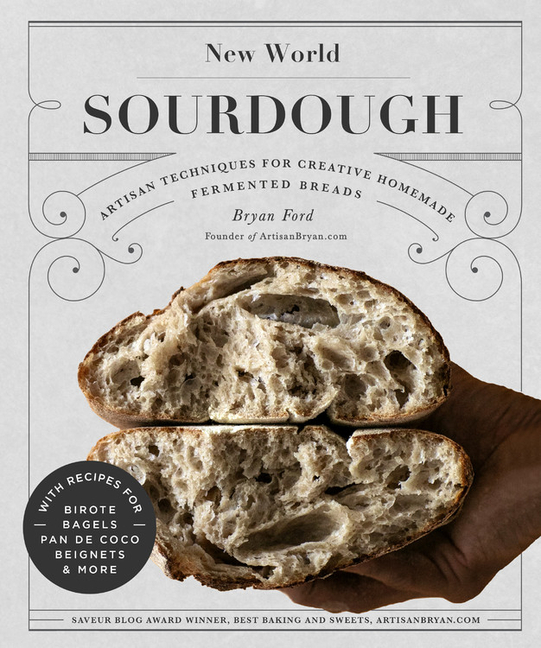
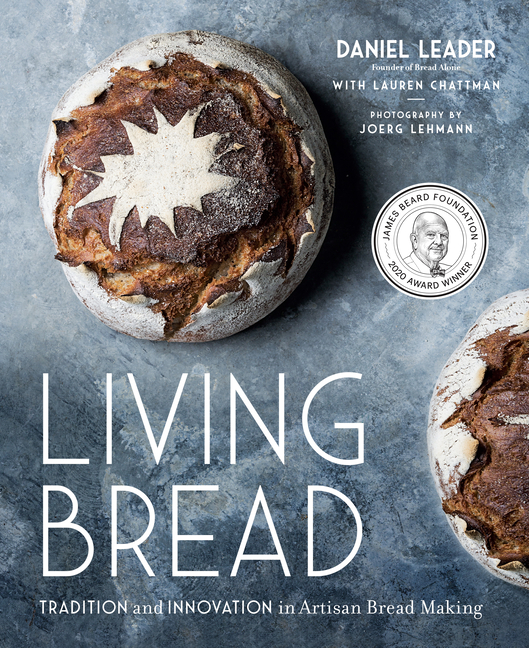

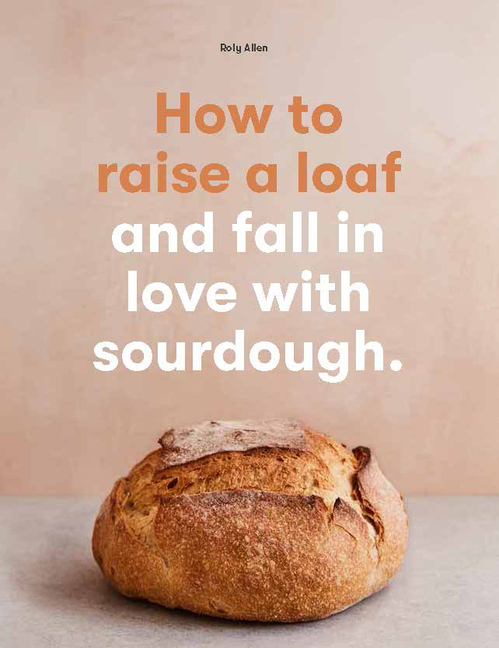
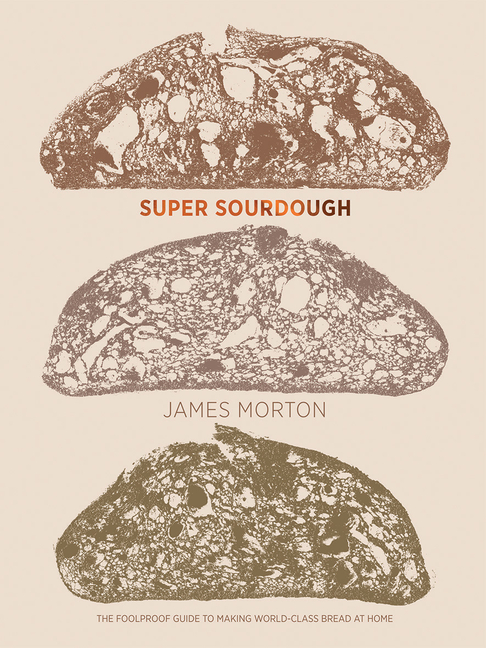
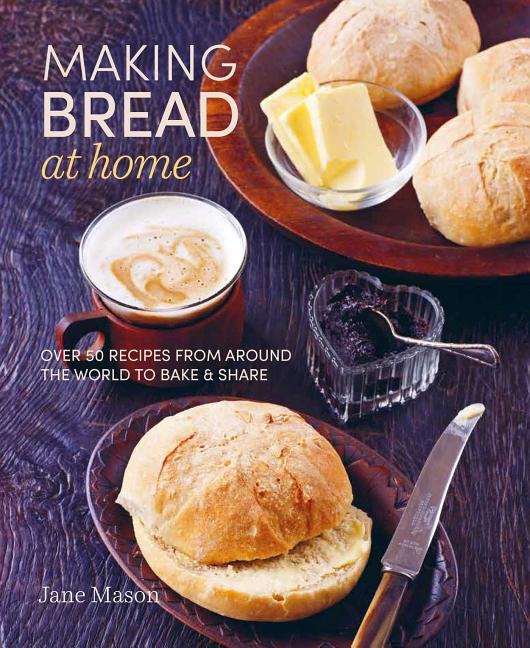
![Bread on the Table: Recipes for Making and Enjoying Europe's Most Beloved Breads [A Baking Book] Bread on the Table: Recipes for Making and Enjoying Europe's Most Beloved Breads [A Baking Book]](https://cdn.porchlightbooks.com/assets/images/books/7/57/257/9257/9781607749257.jpg?u=638491897580600000&height=400&width=400&mode=max)
